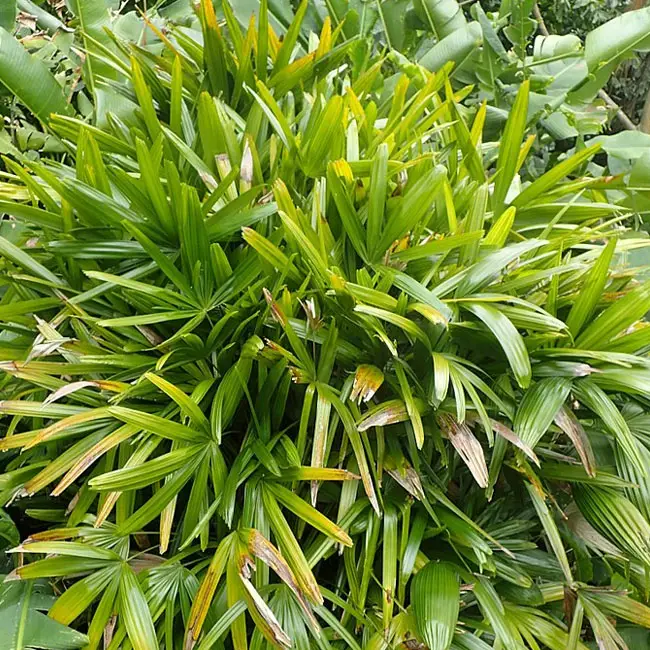
The Lady Palm Tree, scientifically named Rhapis excelsa, is a highly favored choice for both indoor and outdoor settings due to its easy maintenance and impressive cold-hardiness, making it an excellent addition to landscapes in USDA zones 8b-11.
This palm is native to Southeast Asia, specifically regions in China, Taiwan, and southern Japan. It has been cultivated for centuries and has a long history of use in traditional Asian gardens and as an ornamental plant.
Lady Palms display remarkable adaptability, thriving in diverse climates, soils, and environments. They can thrive in low light conditions or bright filtered light, making them suitable for cultivation in states such as Alabama, Arizona, Arkansas, California, Georgia, Louisiana, Mississippi, Nevada, Oregon, and Texas.
Quick Facts:
| Scientific name: | Rhapis excelsa |
| Common names: | Lady Palm, R. flabelliformis, Aristocratic Lady Palm. |
| Origin: | Native to the Southeast area of China. |
| Growth Rate: | Slow. Up to 5-10 ft tall and 1- 5 ft wide. |
| Cold Tolerance: | USDA Zones 8b (15 to 20 F) to 11 (above 40 F) |
| Light Req: | Shade to Partial shade. |
| Water Req: | Moderate. |
| Soil Req: | Widely adaptable. |
| Fruit: | Yes. Creamy. Not edible. |
| Propagation: | By seeds and division. |
Identifying Characteristics of the Lady Palm
Rhapis excelsa reproduces through underground rhizome offshoots, forming multi-stemmed clumps that can expand to considerable widths, often as wide as their height or even more.
The stems are adorned with dark woven palm fibers, which are actually the outer bases of the leaf sheaths. Each stem, or cane, has a width of approximately 1 inch and exhibits a leaf scar pattern reminiscent of bamboo canes.
Lady Palms feature palmate, or fan-shaped, leaves that emerge on unarmed petioles, extending up to 1-2 feet in length. These leaves are deeply divided into 4-10 segments, with a slight offset between them rather than overlapping.
The color of the Lady Palm fronds varies from dark green when grown in shade to a lighter green when exposed to more sunlight.
As the lower leaves age, they transition from a glossy green to a dull, discolored appearance. It is advisable to trim these older leaves for a more attractive overall appearance. Lady Palms typically have fewer than 8 to 10 leaflets per leaf, and the leaflets often have saw-toothed ends.
Flowers and Fruits of the Lady Palm
During the spring months, the Lady Palm produces light green to yellow flowers that are supported by striking pinkish inflorescences at the top of the stem. This palm is dioecious, meaning that male and female flowers grow on separate plants.
These flowers emit a fragrant aroma and are arranged spirally, featuring fleshy characteristics. Female flowers possess a three-part pistil, while male flowers are situated on 2-foot branched inflorescences, extending beyond the leaves towards the top of the plant.
Following the flowering stage, round, fleshy, creamy fruits develop.
Caring for the Lady Palm
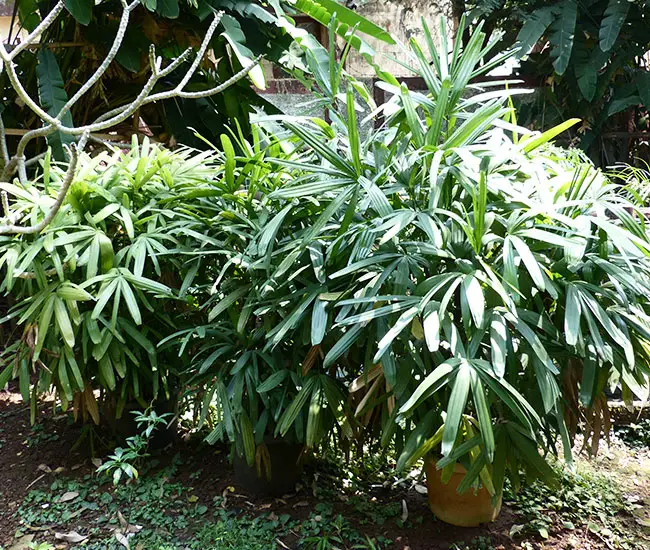
Rhapis excelsa typically reaches a maximum height of about 5-10 feet and spans 1-5 feet in width. However, it’s important to note that the growth rate significantly decreases when cultivated indoors.
In general, Lady Palms are considered slow growers. A typical potted plant measuring 6-8 inches in size has typically spent a minimum of two years in the nursery before reaching that stage.
The Lady Palm Tree is remarkably cold-hardy and can withstand temperatures as low as 15°F. It thrives in USDA Zones 8b (with temperatures ranging from 15 to 20°F) to 11 (above 40°F).
It can flourish in either shade or partial shade, and its ease of care contributes to its popularity for indoor use. To maintain optimal health and prevent nutritional deficiencies, it is recommended to apply a high-quality palm fertilizer with a continuous-release formula twice a year during the growing season.
Propagation of the Lady Palm can be challenging from seeds, requiring added warmth and patience. In most cases, plant division is a more accessible method. It’s worth noting that this palm is considered quite expensive due to limited and costly propagation, primarily because of its slow initial growth.
Lady Palm Pictures
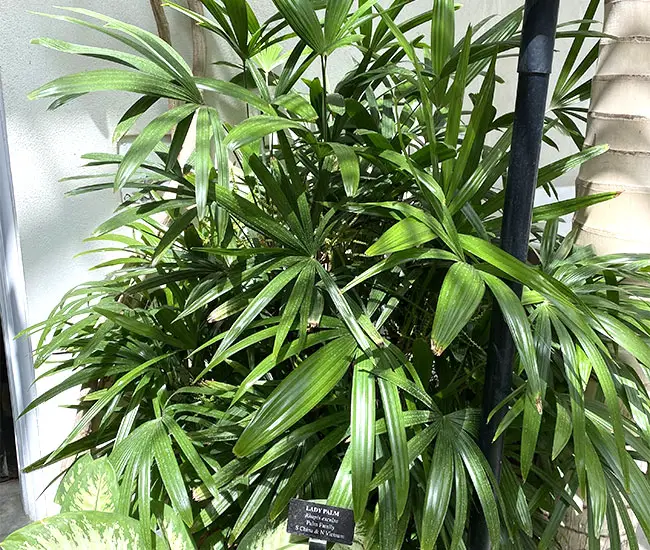
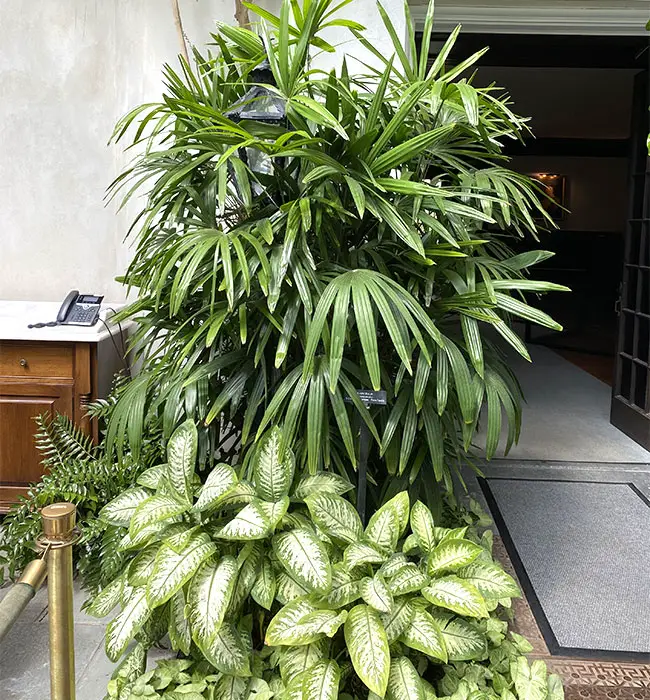
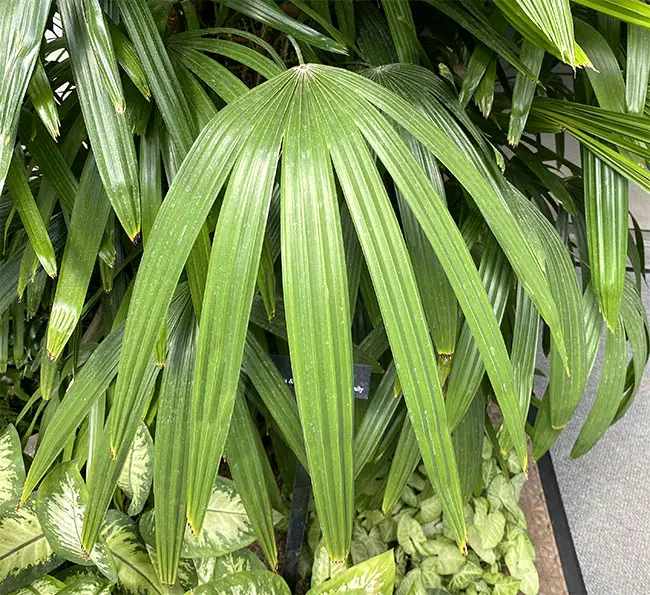
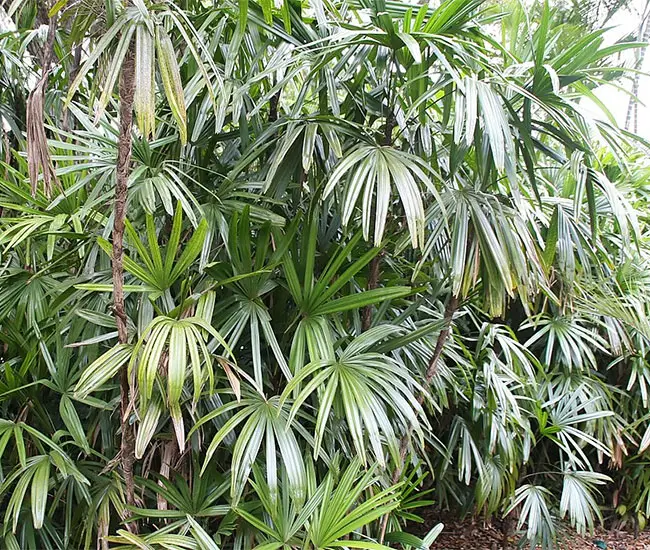
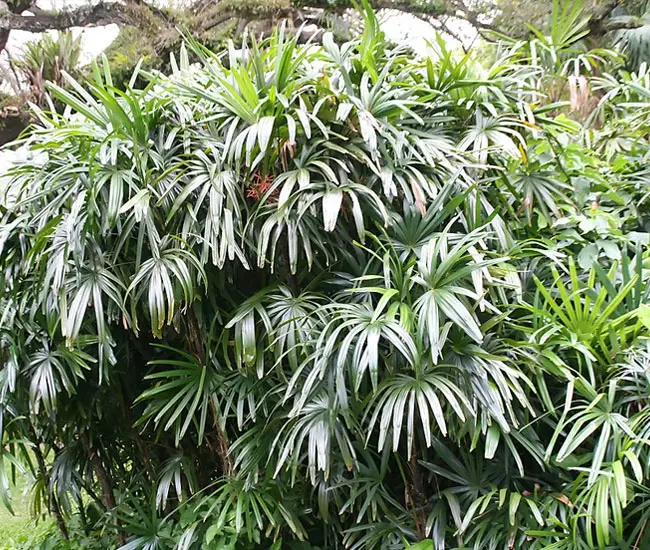
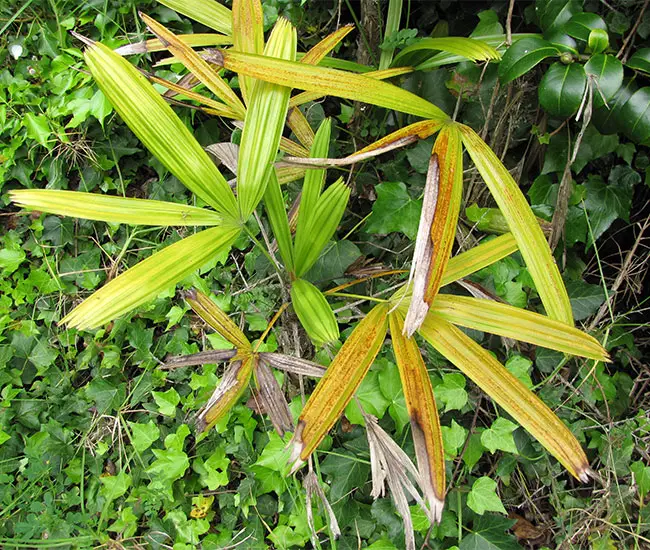
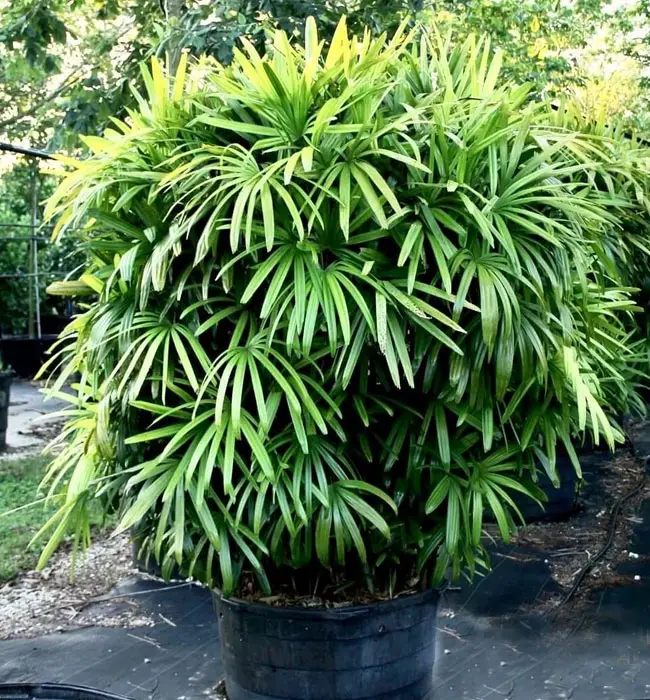
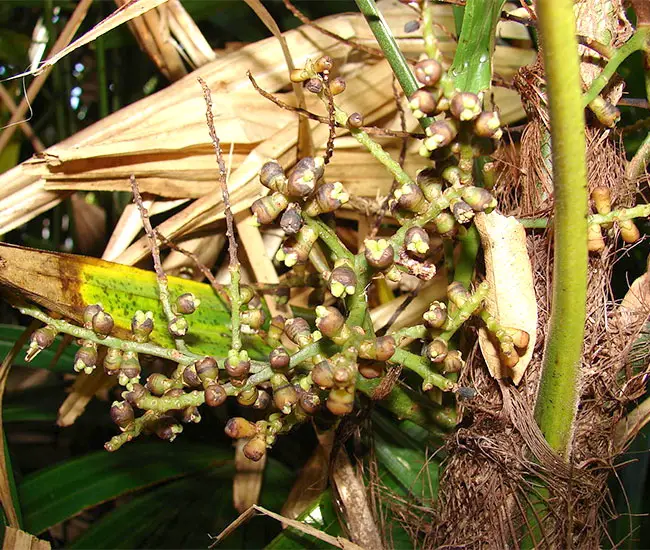
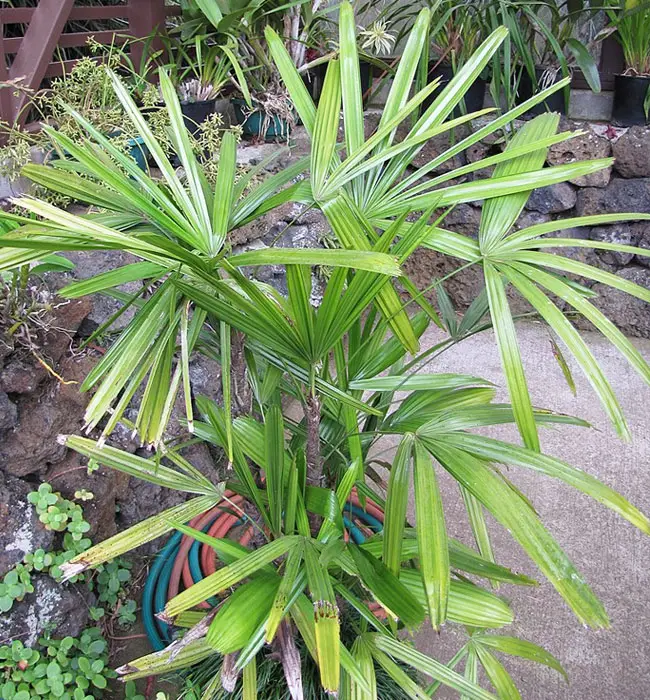
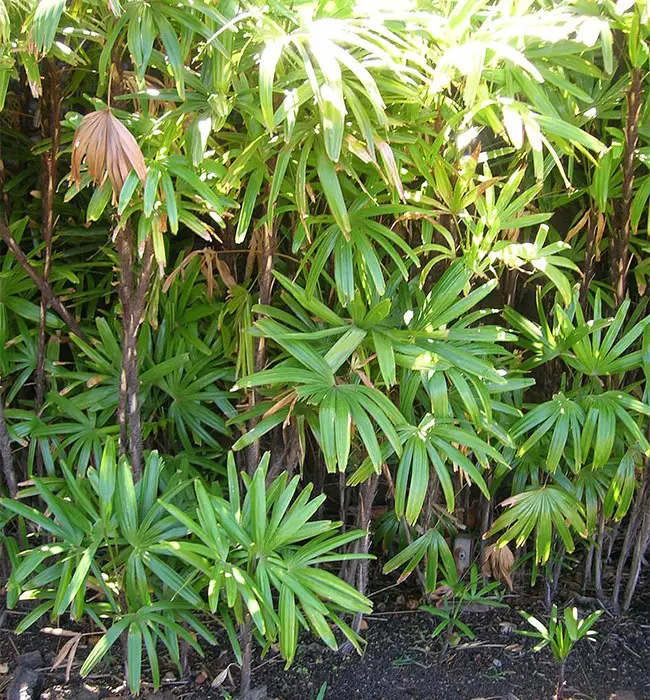
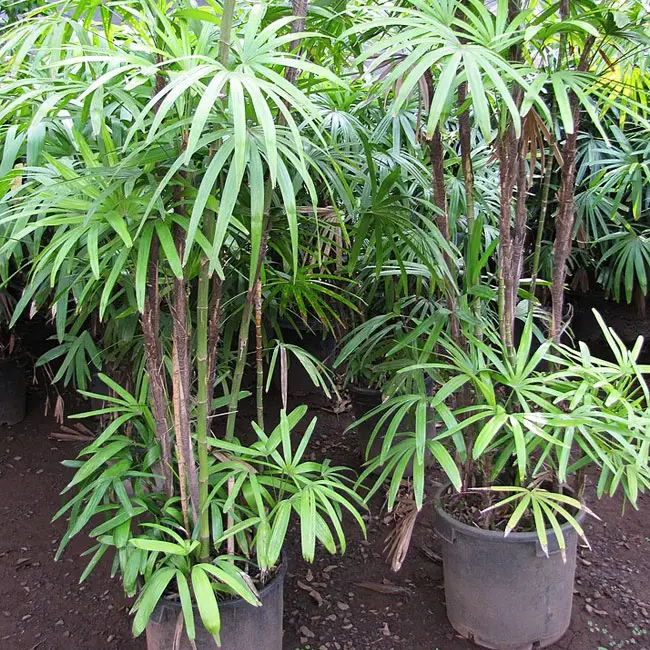
More information can be found on EDIS and Floridata sites.

I have three fan type palms that need to be removed as they are too close to our septic. Do you need any mature palms at this time?
How do they reproduce ?
Can you tell me how to properly transplant a small lady palm? I live in the Tampa Bay area about a mile from the Gulf. There are two small lady palms that are growing under our boat, and I would like to save them before they get run over by the trailer. They are offshoots of a nearby tree on my neighbor’s property, Thanks for any help you can pass along!
Can rhapis excelsa take zone 8a?
My lady palms are very healthy with lots of new growth but most of the old fronds were damaged by the hurricane last year. How should I handle the damage fronds? If I cut the off the clump they will be long leggy stalks. Will fronds grow back from where they were cut or only from the top? If I cut the stalks back to about knee height will they grow back?